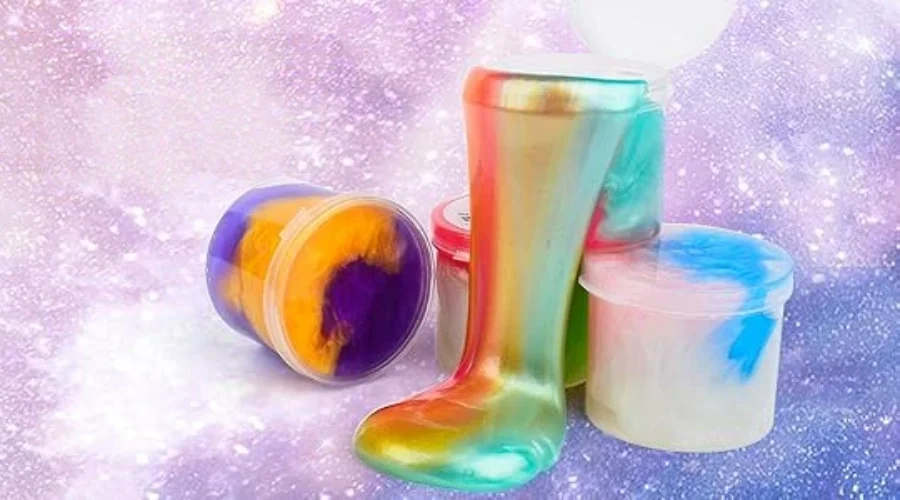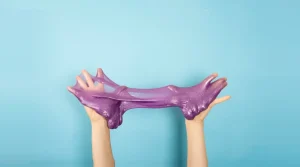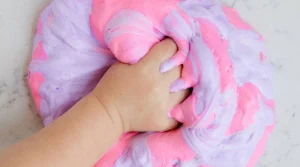
What Do Slime Toys Do? The Science and Learning Behind Slime
Curious about slime toys? Learn what they do and how they help children learn, create, and develop essential skills naturally.
#1 Toys Manufacturer in China. WhatsApp: +86 180-0088-4063. Email: [email protected]
#1 Toys Manufacturer in China. WhatsApp: +86 180-0088-4063. Email: [email protected]

Slime is a stretchy, squishy substance that captivates many, from young children to adults. Its unique texture and playful nature make it popular for sensory exploration and stress relief. But what exactly makes slime so fascinating across different age groups?
Slime usually combines a glue base with an activator like borax or contact lens solution. These ingredients create a polymer—a long chain of molecules—that gives slime its stretchy and flexible qualities. Some DIY recipes add shaving cream, glitter, or foam beads to change texture and appearance, showing how slime’s chemistry can be fun and varied.
Kids enjoy slime for its tactile sensation and endless squishing, which helps develop fine motor skills. Adults often find it relaxing and stress-relieving, similar to stress balls or fidget toys. The hands-on play and visual appeal of colorful or glittery slime can be both entertaining and calming, crossing age boundaries easily.
Slime comes in many forms. Homemade slime offers customization and hands-on science learning, while store-bought slime provides convenience and consistent quality. Variations include fluffy slime, clear slime, magnetic slime, and even edible slime, each appealing differently depending on age and interest.
Slime can be fun, but safety is key for toddlers and preschoolers. Experts usually advise caution because young children tend to put things in their mouths, which raises concerns about choking and exposure to harmful ingredients.
Most pediatricians suggest slime is best for children aged 3 and older. This is because slime often contains small parts or chemicals that might be unsafe if ingested. Parents should always read labels and follow age guidelines on slime packaging.
For little kids, slime can be a choking hazard if it breaks into small pieces. Some ingredients may cause allergic reactions or skin irritation. In some DIY slimes, substances like borax can be toxic if swallowed or used improperly.
For toddlers, non-toxic, edible slime recipes or natural sensory materials like cooked pasta or water beads can be safer choices. These alternatives reduce the risk of allergies or ingestion while still offering tactile play.
Children between 5 and 7 love exploring slime’s squishy, stretchy feel. This age is great for developing fine motor skills and sensory awareness through safe, supervised slime play.
Playing with slime helps children improve hand strength and coordination. The different textures encourage sensory exploration, which is important for brain development and tactile learning.
While kids this age are more careful, adult supervision is still important. Setting clear rules about not eating slime and cleaning hands after play can keep the experience safe and enjoyable.
Fluffy slime, glitter slime, and slime without toxic chemicals are popular at this age. These varieties provide fun textures and colors without compromising safety.
Older kids enjoy experimenting with slime’s properties. This stage allows for creativity and learning as they try new recipes and observe how slime reacts to different ingredients.
Kids can mix colors, add beads, or try magnetic slime to see how different elements change its behavior. These experiments can teach basic chemistry concepts in a fun way.
Making and testing slime introduces kids to science topics like polymers, states of matter, and chemical reactions, fostering curiosity and hands-on learning.
At this age, kids can learn to take responsibility by cleaning their play areas and storing slime properly. This builds good habits and respect for their materials.
Many assume slime is only for young kids, but teens are some of its biggest fans. From relaxing play to DIY experiments, slime continues to be popular across high school hallways and YouTube screens.
For teens dealing with homework, social pressure, and daily stress, slime provides a calming, tactile distraction. Stretching and squishing slime can help reduce anxiety and promote mindfulness.
>> Glow in the Dark Slime: Perfect for Sleepovers
Teens often dive into the science of slime, adjusting recipes and experimenting with new materials like magnetic powder or thermochromic pigments. It’s a gateway to hands-on chemistry.
Slime videos on TikTok and Instagram have made texture and “slime ASMR” into a trend. Teens often create and share their own videos, contributing to the growing slime subculture online.
While slime is mostly safe, many parents worry about mess, harmful ingredients, or unexpected reactions. A few safety checks can help reduce these concerns.
Always scan ingredient labels for items like borax, glue, or essential oils. Watch for warning labels, and avoid anything marked “not for children” or “irritant.”
Designate a slime-safe play zone. Use trays or silicone mats, and avoid fluffy rugs or upholstery. Encourage cleanup with baby wipes and storage containers right after play.
If a child eats slime, check the label and call poison control for advice. For skin rashes or allergies, rinse thoroughly and consult a doctor if irritation persists.
Beyond fun, slime can support developmental skills at every age. When chosen wisely, it becomes a powerful educational tool across subjects.
For children with ADHD or sensory needs, slime can help improve concentration. The repetitive motion of playing with slime engages the senses and promotes calm focus.
Making slime can teach measurements (math), color mixing (art), and reactions (science). Teachers and parents often use it to enrich hands-on learning activities.
Mixing ingredients, following recipes, and cleaning up builds skills like planning, memory, and organization—all part of executive function that grows with age.
Slime isn’t one-size-fits-all. The right texture and level of supervision vary by age. Tailoring slime to developmental stages keeps things safe and fun.
Store slime in airtight containers. Wash hands before and after use. Avoid sharing slime between children to prevent bacteria buildup.
Limit slime play to certain times and locations. Build routines: play, clean, then store. This teaches kids respect for both slime and their environment.
Toddlers need taste-safe, firm slime. Elementary kids can try glitter or cloud slime. Teens may enjoy butter slime or DIY chemical experiments.
Slime isn’t right for everyone. Consider your child’s behavior, sensitivities, and developmental readiness before offering it as a play option.
If your child regularly mouths objects, avoids sticky textures, or gets frustrated easily, they might not be ready. Try again in a few months.
>> Science Behind Slime: What Does Borax Do In Making Slime
For kids who dislike slime’s feel, try kinetic sand, modeling clay, or water beads. These offer sensory benefits without the gooey texture.
As kids grow, introduce baking soda experiments, simple circuits, or paper crafts. Slime can be a gateway to broader hands-on learning activities.
Slime can be a fun, hands-on learning tool for many age groups—when chosen and used wisely. By understanding safety, supervision, and developmental needs, parents can ensure that slime play is both safe and rewarding for kids and teens alike.
Yes, slime can go bad. Over time, it may dry out, grow mold, or start to smell due to bacteria. This often happens if it's stored improperly or touched frequently with dirty hands. Always store slime in an airtight container and check for changes in texture, color, or odor before use.
It depends on the school’s rules. Some schools allow slime during free time or in science projects, while others ban it due to mess concerns. It's best to ask a teacher or check the school policy before bringing slime into the classroom to avoid disruption or accidental damage.
Yes, pets should never play with or eat slime. Many slime ingredients, such as borax or glue, are toxic if ingested. Even non-toxic slime can block a pet’s digestive system. Always keep slime out of reach of animals and clean up any leftover bits to keep your pets safe.
To remove slime from hair, use oil (like olive or baby oil) to gently break it down before washing with shampoo. For clothes, scrape off excess slime and soak the area in white vinegar before washing. Avoid using hot water, as it can set the slime deeper into fabric fibers.
Yes! Making slime is a great way to introduce basic chemistry. Kids learn about polymers, chemical reactions (like borate ions cross-linking glue), and viscosity changes. It also fosters observation and experimentation, making it a hands-on entry point for scientific thinking.
More Related...

Curious about slime toys? Learn what they do and how they help children learn, create, and develop essential skills naturally.

Uncover the science of thermochromic slime — where chemistry meets creativity through playful, color-changing reactions.

Uncover why slime play is more than fun—7 benefits include sensory learning, creativity, and fostering emotional and cognitive development.

Understand how stress-relief putty helps manage anxiety, improve focus, and promote relaxation through tactile sensory play.

Our team will answer your inquiries within 48 hours.
Copyright © 2025 GuangDong AKIA Technology Co,. Ltd. All Rights Reserved